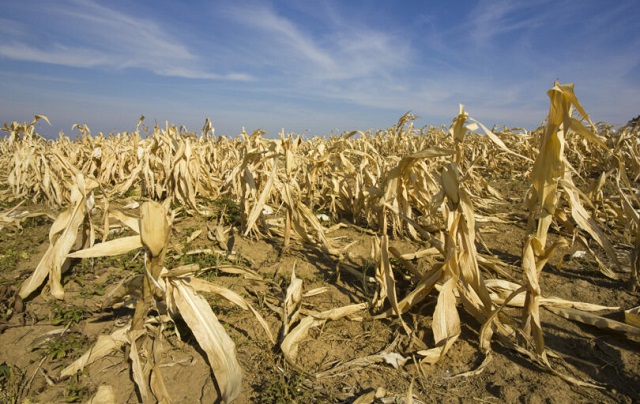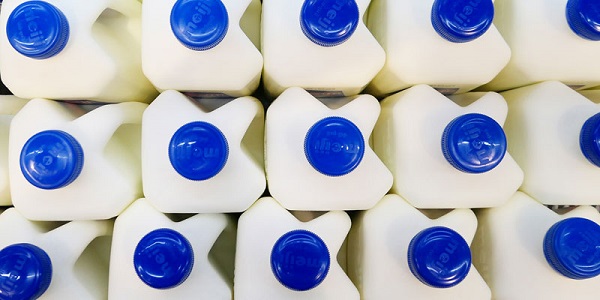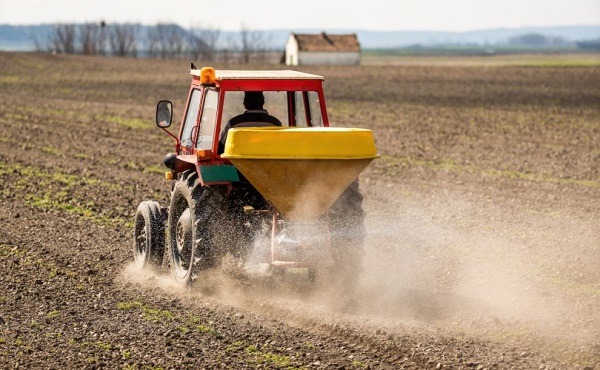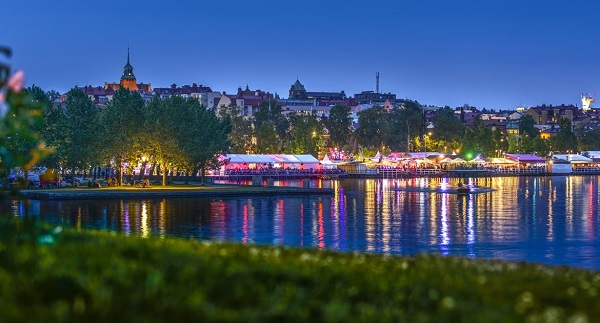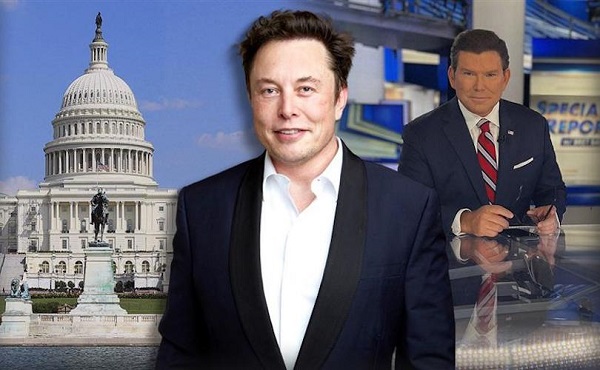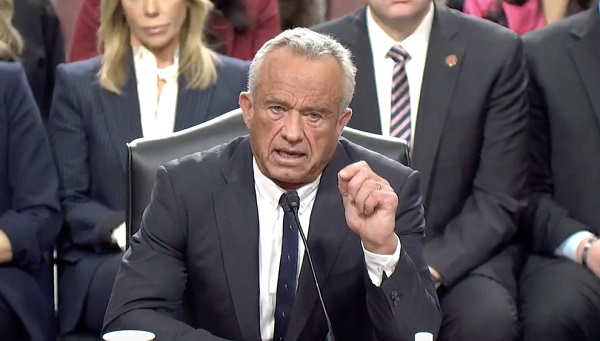Ultimately, the war against farmers is a war on the whole of humanity, one that threatens what it means to be free
STORY AT-A-GLANCE
- A war against farmers has emerged, threatening to push them off the land they’ve farmed for generations.
- As small and mid-sized farms close their doors, governments and corporate entities can scoop up the land.
- Those in control of the land control the food supply and, along with it, the people.
- Much of this threat is cloaked under Agenda 2030, which includes 17 sustainable development goals with 169 specific targets to be imposed across the globe, in every country, by 2030.
- The push to eat insects is part of this plan; in 2021, the European Commission authorized mealworms as food, releasing a news release touting “the growing role that insects will play as part of a healthier, more sustainable diet”
Are green policies around the world, targeting everything from too much nitrogen to protection of endangered species, all part of a plan to get small farmers off the land, paving the way for totalitarian control of the food supply – and insects as part of your daily diet?
[Find the full documentary here.]
These and other tough questions are posed by Roman Balmakov, Epoch Times reporter and host of Facts Matter, in “No Farmers, No Food: Will You Eat the Bugs?” Balmakov says:
The people in charge of some of the most powerful organizations on the planet have determined that agriculture, specifically animal agriculture, is to blame for global warming, and global warming is to blame for the high prices of food as well as food shortages.
And so by switching our diets from beef, chicken and pork, to crickets and mealworms, we’ll be able to stop temperatures from rising, lower the price of food and possibly to even save the planet.
But in interviews with farmers around the world, including in Holland and Sri Lanka, a very different story is told, one that began with a decades-old environmental policy.
Agenda 2030 threatens farmers
In 1972, a United Nations meeting about climate change was held to come up with a plan to manage the planet in a sustainable manner. This led to the creation of Agenda 21 (Agenda for the 21st Century) – the inventory and control plan for all land, water, minerals, plants, animals, construction, means of production, food, energy, information, education, and all human beings in the world.
Agenda 21 is now more commonly referred to as Agenda 2030, the year the plan’s goals are slated to be met. In 2019, the World Economic Forum (WEF) entered into a strategic alliance with the United Nations, which called for the U.N. to “use public-private partnerships as the model for nearly all policies that it implements, most specifically the implementation of the 17 sustainable development goals.”
Agenda 2030 is composed of these 17 sustainable development goals with 169 specific targets, including ending poverty and achieving gender equality, to be imposed across the globe, in every country, by 2030.
“Very comprehensive document if you read it,” says international journalist Alex Newman. “We’re talking hundreds of pages governing really every facet of life, everything from education to land use policy to economics to law. Every area of life was found there.” But hidden underneath these green-sounding initiatives, Newman says, may be a more sinister motive:
There is absolutely no way for the sustainable development goals to be implemented, to be tracked, to be monitored, without the total obliteration of individual freedom. Some of the goals sound nice – ending hunger, who could possibly be against ending hunger? The problem is, when you set a nebulous goal like that, it requires total power from the state to be able to accomplish that.
And of course, they will never accomplish that, right? There is no way to literally eradicate all poverty from the face of the Earth, but it gives government and global institutions, like the U.N., an easy excuse to basically do whatever they want under the guise of meeting these goals.
Is the nitrogen crisis real?
Dutch farmers are in crisis as their government has stepped up plans to move them off the land. You can hear about this in-depth via Dutch investigative journalist Elze van Hamelen’s report and podcast for The Solari Report– Dutch Farmers and Fishermen: The People Who Feed Us.
“In 2021, the European Union’s Natura 2000 network released a map of areas in the Netherlands that are now protected against nitrogen emissions. Any Dutch farmer who operates their farm within 5 kilometers of a Natura 2000 protected area would now need to severely curtail their nitrogen output, which in turn would limit their production,” Balmakov explains.
Dutch dairy farmer Nynke Koopmans with the Forum for Democracy believes the nitrogen problem is made up. “It’s one big lie,” she says. “The nitrogen has nothing to do with environmental. It’s just getting rid of farmers.” Another farmer said if new nitrogen rules go into effect, he’d have to reduce his herd of 58 milking cows down to six.
Nitrogen scientist Jaap C. Hanekamp was working for a government committee to study nitrogen, tasked with analyzing the government’s nitrogen model. He told Balmakov:
The whole policy is based on the deposition model about how to deal with nitrogen emissions on nature areas. And I looked at the validation studies and show that the model is actually crap. It doesn’t work. And doesn’t matter. They still continue using it, which is, in a sense, unsettling. I mean, really, can we do such a thing in terms of policy? Use a model which doesn’t work? It’s never about innovation, it’s always about getting rid of farmers.
The ultimate agenda: no land ownership for the people
As farmers shut down, the government can swoop in and take the land, which may be what the agenda is really about. According to Eva Vlaardingerbroek, former member of Forum for Democracy and a political commentator:
I’ve always said that the nitrogen crisis is, first of all, a made-up crisis. It’s manufactured, and the only solution that has ever been proposed is forced expropriation. So, it is the government that will take hold of their land… We have a housing crisis in the Netherlands, as you know, this is a very tiny country. We have a lot of people, and we have a growing population because of immigration. And we need places to house those immigrants.
And I think that that’s partly why the government wants that land. They need houses, and they need to build houses, which is funny, because apparently building houses is also what emits nitrogen. But that’s not the people they’re coming after. They’re coming, specifically, after the farmers because they want the land. So that is the ultimate goal.
But it’s not only farmers in the Netherlands who are being affected. In 2020, California became the first U.S. state to commit to a 30 by 30 goal, pledging to put 30 percent of its land and water under government control by 2030. But as Margaret Byfield, executive director of American Stewards of Liberty, says, this paves the way for private land ownership to disappear:
The concept in America is self-rule. We the People will rule our government and our Founding Fathers understood that the small landholder is the most important part of the state. The idea was that the land would be distributed among the people so they could always control their government. California has developed a 30 by 30 plan. They’re pushing 30 by 30 in the state…
The ultimate agenda is that there is no ownership of land so that we don’t own anything. We either own property, or we are property. That’s really what we’re fighting from the global governance perspective. They have to eliminate our ability to control our government, which means they have to take our land.
Other seemingly sustainable government regulations may also be wrapped up in this plan. Rep. Doug LaMalfa, farmer and California representative, explains:
A lot of this came about in the early ‘70s Clean Water Act, Clean Air Act, which were good things, you know, the Endangered Species Act, but it’s been abused from what the original intent was. Congress did not intend for it to be abused the way it is and manipulated. The way it is these days, when they wrote those bills, they would have never passed them.
The globalists have it all planned out
Much of the new world order’s plans are based on crisis management, and the idea that a great crisis will occur that will lead to the great transition, where globalists will swoop in to save the day, transforming society into the promised paradise. “At some point down the line, the narrative changed to be around climate,” Balmakov says.
Prior to this, it was the Cold War, but this changed after a 1991 Club of Rome meeting. Both the Rockefellers and early WEF affiliations can be tied back to the Club of Rome, a think tank that aligned with neo-Malthusianism – the idea that an overly large population would decimate resources – and was intending to implement a global depopulation agenda.
“They came up with this incredible document where they actually said, We need a new justification for this all-powerful state,” Newman says. “So, the new excuse is going to be because the environment is going to be harmed and because climate is going to hurt us.” Balmakov continues:
I could not believe what I just heard, that world leaders really laid out this globalist plan in plain English in a physical book, way back in 1991.
I went on Amazon. And there it was. ‘The First Global Revolution,’ which states, and I quote, ‘In searching for a common enemy to unite us, we came up with the idea that pollution, the threat of global warming, water shortages, famine, and the like, would fit the bill. And therefore, the real enemy is humanity itself.’
Reading between the lines, the key players in this globalist agenda become clear. Newman says:
The World Economic Forum was actually a critical part of implementing this U.N. agenda. Some years ago, they became a strategic partner of the U.N. in the implementation of agenda 2030. And then you start looking at the connections between the World Economic Forum and China. Klaus Schwab and Xi Jinping, they’re like old buddies.
They put out press releases about how much they love each other. So, you’ve got the super capitalists, represented by the World Economic Forum, and then on the government side, you have communists. after Agenda 2030 was adopted, become the Party of China, put out through all their propaganda organs.
… you had Javier Solana, the head of NATO, saying this was going to be the next great leap forward, right? The last great leap forward in China killed millions of people. Why would we want another one of those? That’s crazy.
So, you have communists and super capitalists all coming together and working on this one, sustainable development agenda. And that should make us all pause and say, ‘Wait a minute, that doesn’t make sense on the surface. What’s going on here?’
Bring on the bugs
Globalists suggest eating bugs will protect the planet by eliminating the need for livestock, cutting down on agricultural land use and protecting the environment. The U.N.’s Food and Agriculture Organization also encourages the consumption of insects and insect-based foods.
In June 2021, WEF also published an article, categorized under “food security,” in which they promote the use of insects, writing we “need to give insects the role they deserve in our food systems.” They justify this proposal by saying it will address an impending food crisis.
In 2021, the European Commission authorized mealworms as food, releasing a news release touting “the growing role that insects will play as part of a healthier, more sustainable diet, as well as the benefits for the environment for years to come.” Victor Davis Hanson, a military historian and almond farmer, notes:
There’s this top-down globalist idea that certain Western countries have diets that they do not approve of. In other words, they’re more meat-based. And they feel that humans don’t need meat-based protein. And they want to either force people to follow their paradigms, or they want to buy or accumulate farmland. And that’s how they’re going to farm it. It’s sort of like the Soviet Union or Mao’s Cultural Revolution. It’s top down. And it results in disasters.
Without farmers, there’s no food
If government and corporate entities are able to take control of the land, they can control the food supply and, with it, the people.
“Everywhere you look small and medium sized farms being gobbled up by these corporate mega farms, because they can’t keep up anymore. They can’t comply with these endless streams of regulations that are coming down,” Newman says.
“We’re seeing that in China now where these giant mechanized corporate, big government-controlled mega farms are displacing all these little small family farms that families have been farming for hundreds of years – in some cases longer.” Without land, people lose their autonomy, freedom and independence. Hanson says:
When the American nation was founded, 95% of the people were homestead citizens. They had their own land, and they were completely independent, autonomous. They raised their own food. They were outspoken, they were economically viable. Farming serves two purposes. It doesn’t just produce food, but it produces citizens.
Ultimately, the war against farmers is a war on the whole of humanity, one that threatens what it means to be free. “We are headed into, I think, a time of very significant food shortages. Can we expect to see massive increases in food prices next year? Oh, no question about it,” Newman says, adding:
I think the end goal of the war on farmers that we’re seeing, which is guided at every step by the sustainable development goals and Agenda 2030, is going to be a total consolidation of agriculture, a total consolidation of the food supply. And as every communist tyrant of the last 100 years understood, if you control the food, you control the people. That’s ultimately the end goal.
Reprinted with permission from Mercola.
